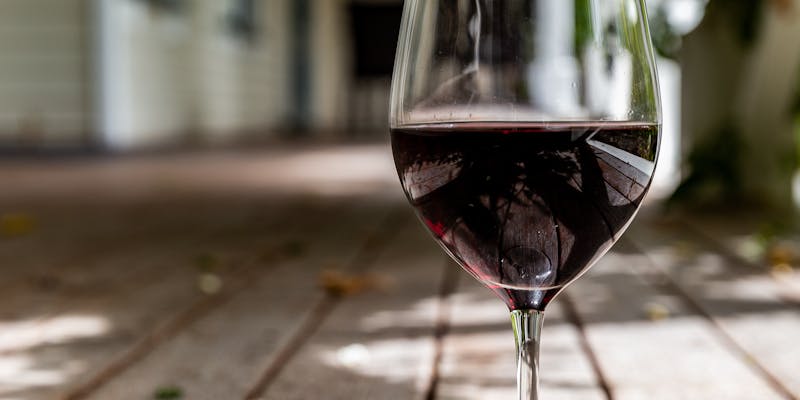Wine Wars: Unveiling the Best in Wine Comparisons
Step into the thrilling world of wine comparisons as we uncork the ultimate showdown between the finest varietals, regions, and quality standards. In this comprehensive blog post, get ready to witness the Battle of the Grapes as we unveil the top contenders in the realm of wine comparisons. From bold reds to crisp whites, we take you on a journey through the vineyards of knowledge, exploring the nuances that set each varietal apart in a quest for vinous supremacy.
Prepare to be transported across continents as we delve into the intriguing clash between Old World and New World wines, unravelling the distinctive characteristics that define each region's winemaking legacy. Join us as we lift the veil on Blind Tasting Showdowns, where only the most discerning palates can separate the winners from the also-rans. Whether you're a seasoned sommelier or a budding enthusiast, this article promises to decode the secrets of wine value, guiding you through the maze of price tags and quality indicators to uncover the true gems that sparkle in the dazzling universe of wine comparisons

Battle of the Grapes: Unveiling the Top Varietal Wine Comparisons
When it comes to comparing wines, the battle of the grapes takes us on a journey through the intricate world of varietal wines. Each grape variety has its distinct characteristics that shape the flavour, aroma, and overall profile of the wine it produces. In unveiling the top varietal wine comparisons, we delve into the nuances that make each wine unique and explore how different grapes measure up against each other.
From the robust Cabernet Sauvignon to the elegant Pinot Noir, the world of varietal wines offers a diverse range of options for wine enthusiasts to explore. Whether you prefer the boldness of a Shiraz or the crispness of a Sauvignon Blanc, understanding the characteristics of each grape variety is key to appreciating the differences between wines.
In this exploration of wine comparisons, we uncover the subtle nuances that differentiate varietal wines and highlight the key factors that contribute to their individuality. By examining aspects such as grape growing regions, winemaking techniques, and aging processes, we gain insight into the complexities that shape the final product in our glasses.
Through side-by-side comparisons of varietal wines, we can discern the unique qualities that set each wine apart and identify the profiles that appeal most to our palates. Whether you are a seasoned wine connoisseur or a novice enthusiast, exploring the world of varietal wine comparisons is a fascinating journey that enriches our appreciation for the artistry of winemaking and the diversity of grape varieties
Old World vs New World: Exploring Regional Wine Contrasts
When it comes to wine, the distinction between Old World and New World wines is not just geographical; it encompasses a wide array of factors that influence the taste, style, and overall character of the wines produced in these regions.
Old World wines hail from countries in Europe with a rich history of winemaking, such as France, Italy, Spain, and Germany. These wines are often defined by their traditional winemaking practices, strict regulations, and emphasis on terroir – the unique characteristics of the region where the grapes are grown. Old World wines are known for their subtlety, complexity, and ability to reflect the specific nuances of the vineyard.
On the other hand, New World wines come from regions outside of Europe, including countries like the United States, Australia, New Zealand, and South Africa. These wines are characterized by their innovation, bold flavors, and accessible styles. New World winemakers are often more experimental in their approaches, using modern techniques and technologies to create wines that are fruit-forward, powerful, and often higher in alcohol content.
When comparing Old World and New World wines, it's essential to consider how these different approaches influence the final product. Old World wines tend to be more restrained, elegant, and focused on balance, while New World wines are often fruitier, richer, and more expressive. Understanding these regional contrasts can help wine enthusiasts appreciate the diversity of styles available and explore the nuances of winemaking traditions from around the world.
In the end, whether you prefer the classic elegance of Old World wines or the bold flavours of New World wines, the beauty of wine lies in its ability to transport you to different regions, cultures, and experiences with every sip. So, next time you're exploring the world of wine comparisons, consider the fascinating interplay between Old World and New World styles and let your palate guide you on a journey of discovery and enjoyment. Cheers!
Blind Tasting Showdown: Revealing the Winners in Wine Face-offs
In the world of wine, comparisons are crucial for those seeking to distinguish between various bottles and determine which ones truly stand out. One of the most intriguing ways to do this is through blind tastings, where wines are sampled without any prior knowledge of their labels or origins.
Blind tasting showdowns bring an air of excitement and suspense to the experience, as sommeliers and enthusiasts alike are challenged to rely solely on their taste buds and senses. This level playing field removes any biases that could arise based on a wine's brand name or price tag, allowing the true qualities of each bottle to shine through objectively.
During these face-offs, wines are judged based on criteria such as appearance, aroma, taste, and finish. Participants must pay close attention to subtle nuances and characteristics that set each wine apart, ultimately leading to the revelation of the top contenders.
By unveiling the winners in these wine face-offs, enthusiasts can discover hidden gems, reaffirm their preferences, and expand their knowledge of different varietals and regions. These showdowns not only provide entertainment and friendly competition but also offer valuable insights that can enhance one's appreciation for the art of winemaking.
In conclusion, blind tasting showdowns serve as a thrilling way to explore and evaluate wines, ultimately uncovering the best among them. Whether you're a seasoned connoisseur or just beginning your wine journey, these comparisons provide a unique opportunity to discover new favourites and gain a deeper understanding of the diverse world of wine

Price Tag vs Quality: Decoding Wine Value in Side-by-Side Comparisons
When it comes to exploring the world of wines, one of the most intriguing aspects is deciphering the correlation between price and quality. In the realm of wine comparisons, the juxtaposition of price tags against the perceived quality can be a fascinating journey for both novice enthusiasts and seasoned oenophiles alike.
The concept of wine value is multifaceted, extending beyond mere monetary cost to encompass the overall quality of the wine-drinking experience. In side-by-side wine comparisons, the opportunity arises to delve deep into the intricacies of various wines, assessing elements such as aroma, taste profile, complexity, and finish against their respective price points.
Decoding wine value involves a nuanced approach that goes beyond a simple price tag. While some wines may come with a hefty price due to factors like brand prestige or rarity, others may surprise with their exceptional quality at a more modest cost. Through side-by-side comparisons, one can appreciate the nuances in winemaking techniques, grape varietals, terroir influences, and ageing processes that contribute to a wine's overall value proposition.
In the quest to unveil the best in wine, comparing wines side by side provides a unique opportunity to challenge preconceived notions, discover hidden gems, and refine one's palate. Whether it's a showdown between Old World and New World wines, a vertical tasting of vintages from the same producer, or a blind tasting to eliminate bias, the act of comparing wines can be educational, eye-opening, and most importantly, enjoyable.
Ultimately, the essence of wine comparisons lies in appreciating the diversity of wines available, understanding the factors that influence their prices, and recognising that true value in wine is not solely determined by cost but by the intrinsic qualities that make each wine unique. So, the next time you raise a glass, remember that the journey of exploring wine value through comparisons is an enriching experience that adds depth and dimension to your wine appreciation. Cheers to decoding the true essence of wine value!
Navigating the World of Wine Comparisons
Wine is a drink that has been cherished for centuries, with each bottle telling a unique story through its grape variety, terroir, and production methods. With the plethora of options available in the wine world, comparing different wines can be both a fascinating and challenging endeavor.
When we talk about wine comparisons, we delve into a realm where nuances in taste, aroma, body, and finish distinguish one wine from another. Navigating this intricate world requires a keen palate, an appreciation for detail, and a sense of adventure.
One aspect of wine comparisons involves understanding the different grape varieties and their characteristics. For example, a Cabernet Sauvignon from Bordeaux will have distinct differences compared to a Shiraz from Australia due to factors such as climate, soil, and winemaking traditions. By exploring these differences, wine enthusiasts can broaden their understanding and appreciation of various styles of wine.
Furthermore, evaluating wines side by side can reveal subtleties that might go unnoticed when tasted in isolation. Tasting flights or comparative tastings provide an excellent opportunity to discern the different profiles of wines, identify personal preferences, and develop a more nuanced palate.
In the world of wine comparisons, terminology plays a crucial role in articulating the sensory experiences associated with each wine. Terms like tannic, oaky, acidic, and complex are just a few examples of descriptors used to communicate the characteristics of a wine. Familiarising oneself with this language can enhance the ability to express and interpret the nuances found in different wines.
Ultimately, navigating the world of wine comparisons is a journey of discovery, learning, and enjoyment. It invites enthusiasts to explore the diversity of wines available, broaden their tasting horizons, and deepen their passion for the grape. So, raise a glass, embark on your wine comparison adventure, and savour the rich tapestry of flavours that the world of wine has to offer
Conclusion
In conclusion, our journey through the captivating world of wine comparisons has uncovered a plethora of insights and revelations. From the epic Battle of the Grapes that showcases the top contenders in the wine realm to the exploration of Old World versus New World wines, we have unravelled the intricate tapestry of flavours, traditions, and legacies that shape the vinous landscape.
Through Blind Tasting Showdowns, we witnessed how discerning palates can discern the true champions amidst the sea of contenders. This blog post has served as a guiding light for both seasoned sommeliers and budding enthusiasts, navigating through the complex maze of price tags and quality indicators to unearth the hidden gems that elevate the art of wine comparisons.
As we raise our glasses to this odyssey of discovery, may you embark on your own quest for vinous supremacy armed with knowledge, curiosity, and an appreciation for the remarkable diversity that the world of wines has to offer. Cheers to unravelling the secrets of wine value and embracing the beauty of comparison in every sip